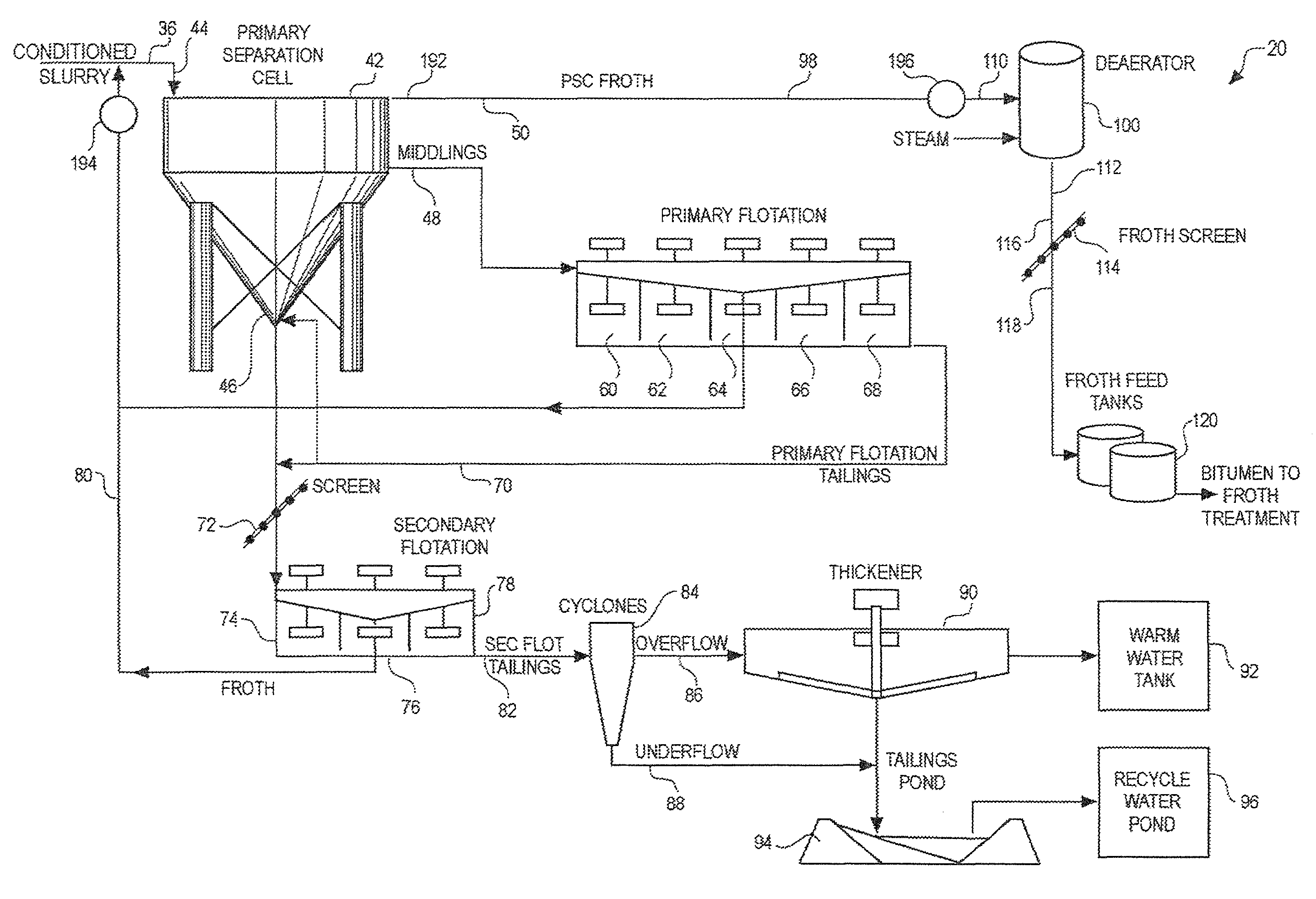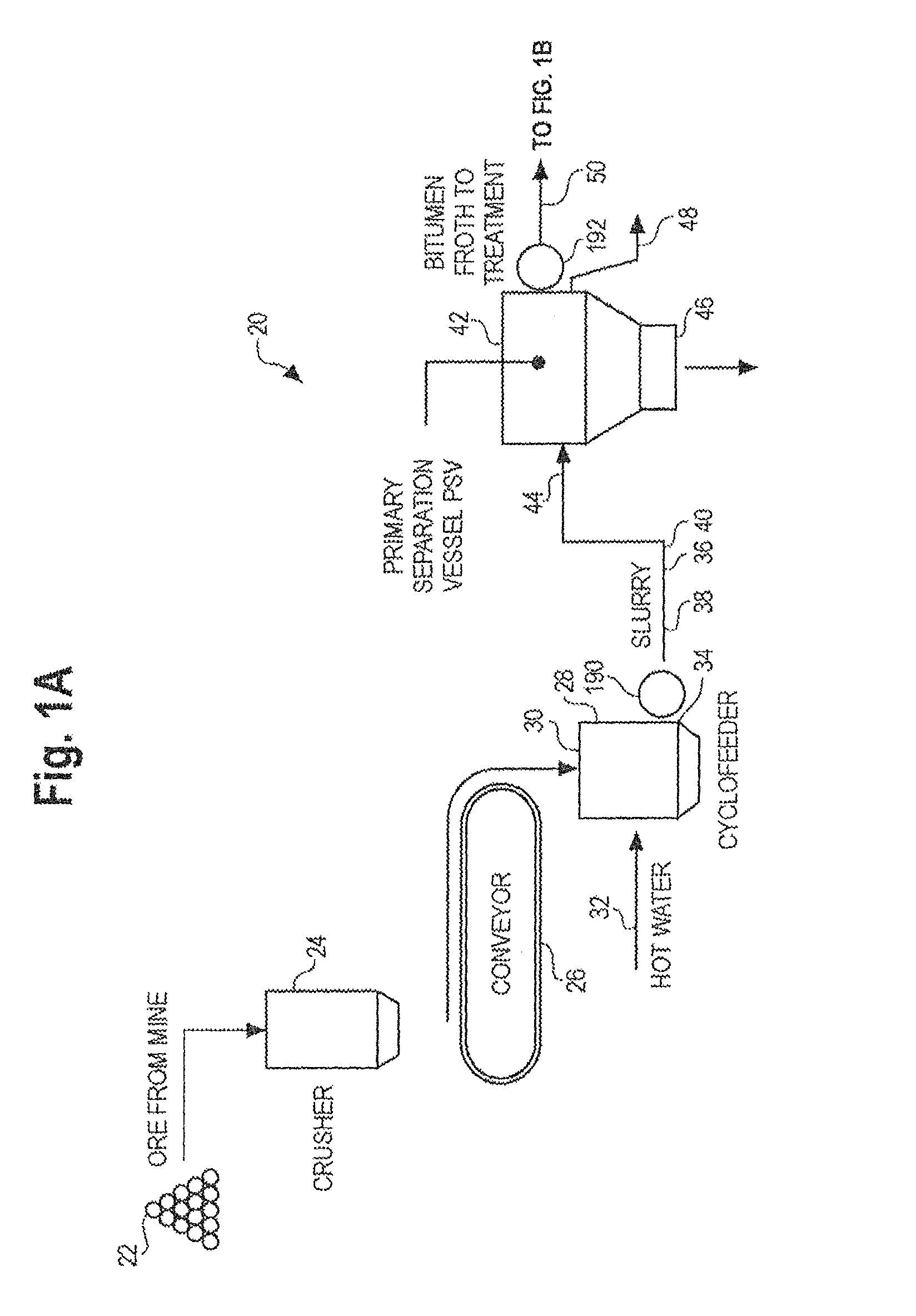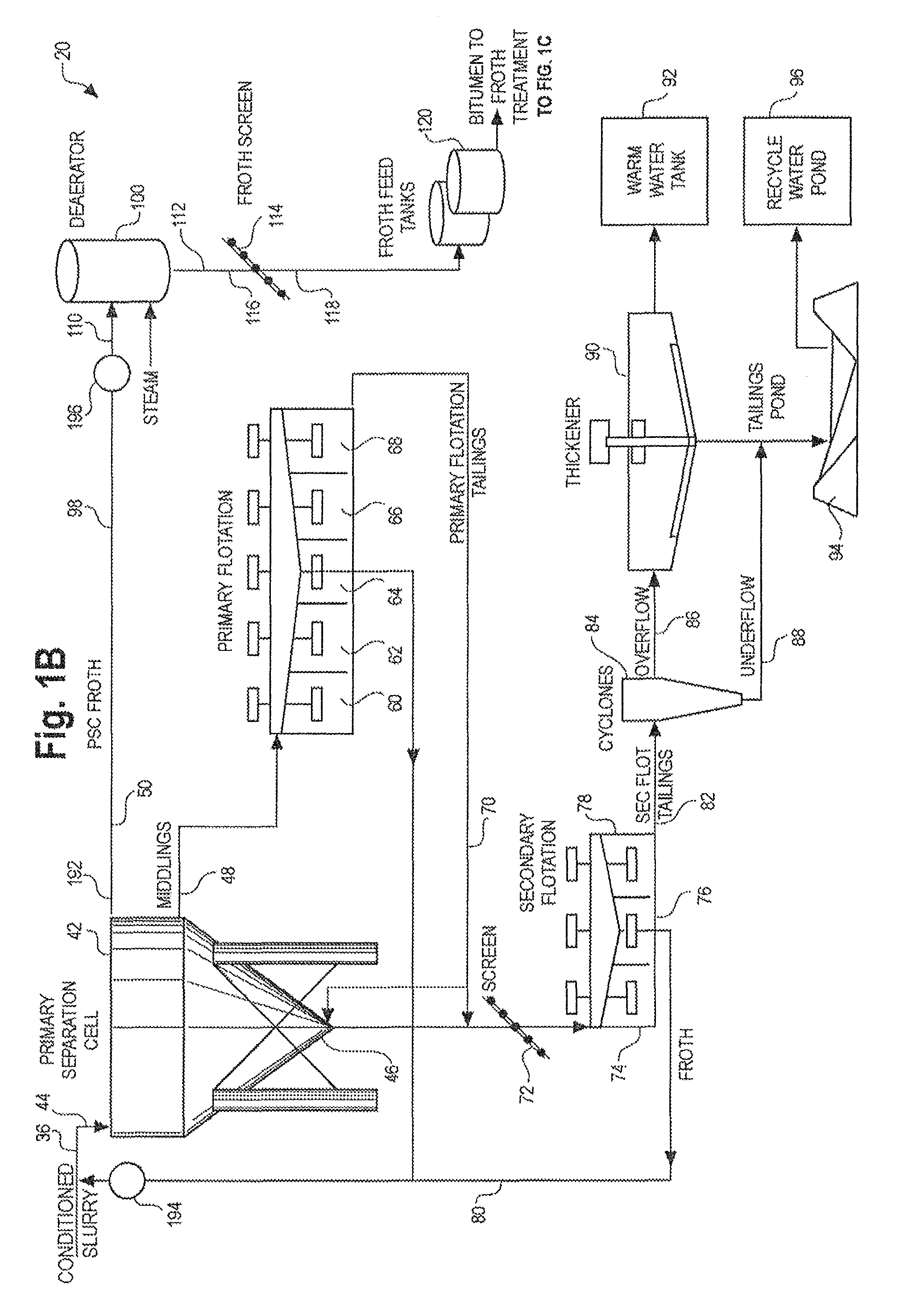RF heating to reduce the use of supplemental water added in the recovery of unconventional oil
a technology of unconventional oil and supplemental water, which is applied in the field of rf heating to reduce the use of supplemental water in the recovery of unconventional oil, and can solve the problems of not economically feasible to heat the entire process to 80° c, loss of heat introduced, and loss of process water
- Summary
- Abstract
- Description
- Claims
- Application Information
AI Technical Summary
Benefits of technology
Problems solved by technology
Method used
Image
Examples
Embodiment Construction
[0046]The present invention will now be described more fully hereinafter with reference to the accompanying drawings, in which one or more embodiments of the invention are shown. This invention may, however, be embodied in many different forms and should not be construed as limited to the embodiments set forth herein. Rather, these embodiments are examples of the invention, which has the full scope indicated by the language of the claims. Like numbers refer to like elements throughout.
[0047]One aspect of the invention is equipment for separating bitumen from oil sands in a process stream. For convenience, “bitumen” is broadly defined here to include kerogen and other forms of petroleum bound to a substrate.
[0048]One example of equipment 20 for separating bitumen from oil sands is shown in FIGS. 1A, 1B, and 1C. Upstream of the equipment 20, ore 22 is dug from an oil sand mine, for example using a power shovel. The ore 22 can be conveyed, for example by dump trucks, to the equipment 2...
PUM
 Login to View More
Login to View More Abstract
Description
Claims
Application Information
 Login to View More
Login to View More - R&D
- Intellectual Property
- Life Sciences
- Materials
- Tech Scout
- Unparalleled Data Quality
- Higher Quality Content
- 60% Fewer Hallucinations
Browse by: Latest US Patents, China's latest patents, Technical Efficacy Thesaurus, Application Domain, Technology Topic, Popular Technical Reports.
© 2025 PatSnap. All rights reserved.Legal|Privacy policy|Modern Slavery Act Transparency Statement|Sitemap|About US| Contact US: help@patsnap.com



